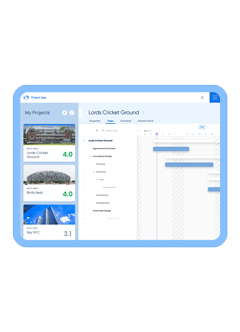One of the most critical processes for any successful business is billing. To advance your own AEC firm’s billing processes, it’s important to understand four key ways that can help.
The Billing Process
Getting your billing to run efficiently, is an important step in optimizing your firm’s cash collection. But if you have a poor billing process that takes too long to get invoices out the door, that makes it difficult to collect the cash you need, when you need it.
While it’s very possible for you to fix your firm’s billing issues, you can’t think of it as a one-and-done process. It takes time, and some trial and error, before you can get it right. By setting the expectation that billing cannot be fixed overnight and that it requires constant effort from all persons involved, you’ll make the chances of fundamentally improving this process much higher.
How to Improve Your Billing Process
There are four key elements you must pay attention to when working on your firm’s billing process. Let’s investigate each.
- Know the terms of the project: The more clearly defined your invoicing terms are in the contract with your client, the less likely you’ll be to have misunderstandings. And by “invoicing terms,” I not only mean how long your client has to pay the invoice, but also the layout and the content of the invoice.
What goes into an invoice and what it looks like may be different for each project. But, by introducing standards to limit the number of varying invoice formats, it makes it easier to ensure your team is using the correct format from project to project. - Schedule frequent billing reviews: Project billing reviews should be scheduled throughout every month. Because too many AEC firms still consider it a monthly event, this causes bottlenecks when trying to do a billing review of all projects in a compressed timeframe. Instead of doing it all at once, try spreading it across the month and doing a few projects each week. For example, say you have 100 projects going on at once, you can review 25 a week instead of 100 at the end of the month. And even if you’re not billing your client each month, it’s still a good idea to review the charges you’ve billed on a regular basis to make sure they’re allocated to the right project and the right task.
- Monitor the billing process: Project Managers, Project Directors, and Project Accountants are usually involved in the review process of the draft invoice or prebill. Because several individuals need to be involved, this can make it easy to lose sight of when each person is working on the bill.Ask yourself this: your Project Manager is done with their review — do you know if the bill moved to the Project Director, or is it back with the Billing department? If you don’t have the answer, then you should consider finding an ERP solution that allows your team to have a clear view of this process. Being able to see what stage the billing process is at helps alleviate confusion and eliminate the extra time it takes to track down prebills.
- Store documents electronically: Project billing typically requires copies of reports and receipts as backup for charges on an invoice. The problem is, many AEC firms still use paper-based backup systems. This involves a manual effort to find backup documents in filing cabinets, making photocopies of those documents, and then combining the copies.Instead, all documents should be stored electronically in a document management system. That way you can find them faster and you can combine them into a single PDF to send to a client with the final bill.
The Impact
Now you know the four ways you can improve your billing process — but what does all of this really mean for your firm? Well, it means you can expect a positive impact in two key areas:
- Work in Progress (WIP): As WIP represents what has not yet been billed for a project, billing on a regular basis helps reduce the amount of WIP your firm shows on its books. This makes the reverse true as well — inconsistent billing causes your WIP value to increase. Not billing regularly can also lead to your profit or loss taking a hit when needing to write off outstanding WIP that can no longer be billed. Essentially, if you’re billing a client too long after the work for that bill was completed, it’s possible the client may deny that charge. But if you bill on a regular basis, you can avoid this potentially uncomfortable back and forth with clients altogether.
- Days Sales Outstanding (DSO): One of the most important KPIs used to benchmark cash collection is DSO, and the part of billing that impacts DSO is your invoices. If your invoices are accurate and complete, then it makes the process of a client’s approval for payment much quicker and easier. Faster approvals lead to getting paid sooner, which decreases your outstanding receivables, and positively impacts DSO by reducing it.
Conclusion
While improvements in your billing process can help lower your firm’s WIP account balance and reduce DSO, it can also lead to a better relationship with your clients.
When your client’s Accounting department can rely on the accuracy and timeliness of your billing practices — that’s going to make one happy client. Don’t underestimate how much of a factor that will play in their decision for awarding future project work. The impact on client satisfaction alone should be a good enough reason to improve your firm’s billing processes.
Interested in learning more about the billing process? Check out The Ultimate ERP Glossary for AEC Firms, which includes 150 terms that will help you learn not just about billing, but about the entire project lifecycle. Download your free copy by clicking below!










